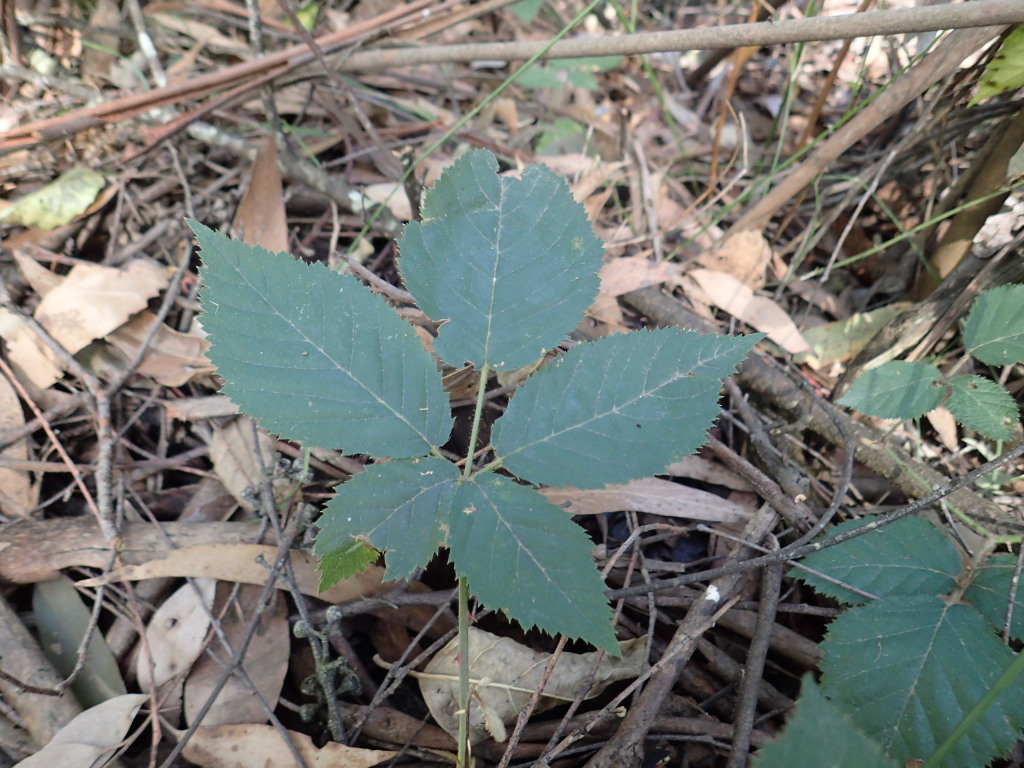Rubus leucostachys
Schleich. ex Sm.Scrambling or trailing, semi-deciduous shrubs; stems sometimes arching, 1–2 m long, angled, faces concave, purplish, covered with a very close, fine white pubescence, sometimes with scattered stalked glandular hairs; prickles more or less equal, straight or recurved, mainly on the angles, to c. 10 mm long. Leaves 3- or 5-foliate; leaflets elliptic to broad ovate or obovate, mostly 4–8 cm long, 3–8 cm wide, base cuneate to cordate, margins sharply toothed, upper surface green, glabrescent, lower surface white-tomentose with numerous pilose hairs especially on the main veins; stipules linear, pilose. Flowers in terminal, narrowly cylindric racemes; axis and peduncles tomentose and pilose, rarely with a few glandular hairs. Sepals white-tomentose, usually unarmed, reflexed in fruit; petals obovate, usually pink; stamens exceeding styles. Fruiting head more or less globose, c. 15 mm diam.; fruit glabrescent, black, not falling from the receptacle when ripe. Flowers summer.
VVP, VRiv, GipP, WaP, CVU, GGr, NIS, EGU, HSF, HNF, OtR, Strz, VAlp. Also naturalised in SA, NSW, ACT, Tas. Native to Britain. Relatively widespread throughout Victoria, usually found in moist riparian or other mesic habitats.
As currently treated, Rubus leucostachys is a species complex that comprises many of the plants previously included in Rubus chloocladus along with some of the plants previously considered to be hybrids of R. ulmifolius. Evans et al. (2007) include several specimens in a ‘close to leucostachys’ group. In many ways these individuals morphologically resemble R. leucostachys but DNA fragment analysis suggests they are more closely allied to other species.
Jeanes, J.A.; Jobson, P.C. (1996). Rosaceae. In: Walsh, N.G.; Entwisle, T.J., Flora of Victoria Vol. 3, Dicotyledons Winteraceae to Myrtaceae, pp. 556–585. Inkata Press, Melbourne.
 Spinning
SpinningMisapplications
Evans, J.K.; Symon, D.E.; Whalen, M.A.; Hosking, J.R.; Barker, R.M.; Oliver, J.A. (2007). Systematics of the Rubus fruticosus aggregate (Rosaceae) and oher exotic Rubus taxa in Australia. Australian Systematic Botany 20: 187–251.


